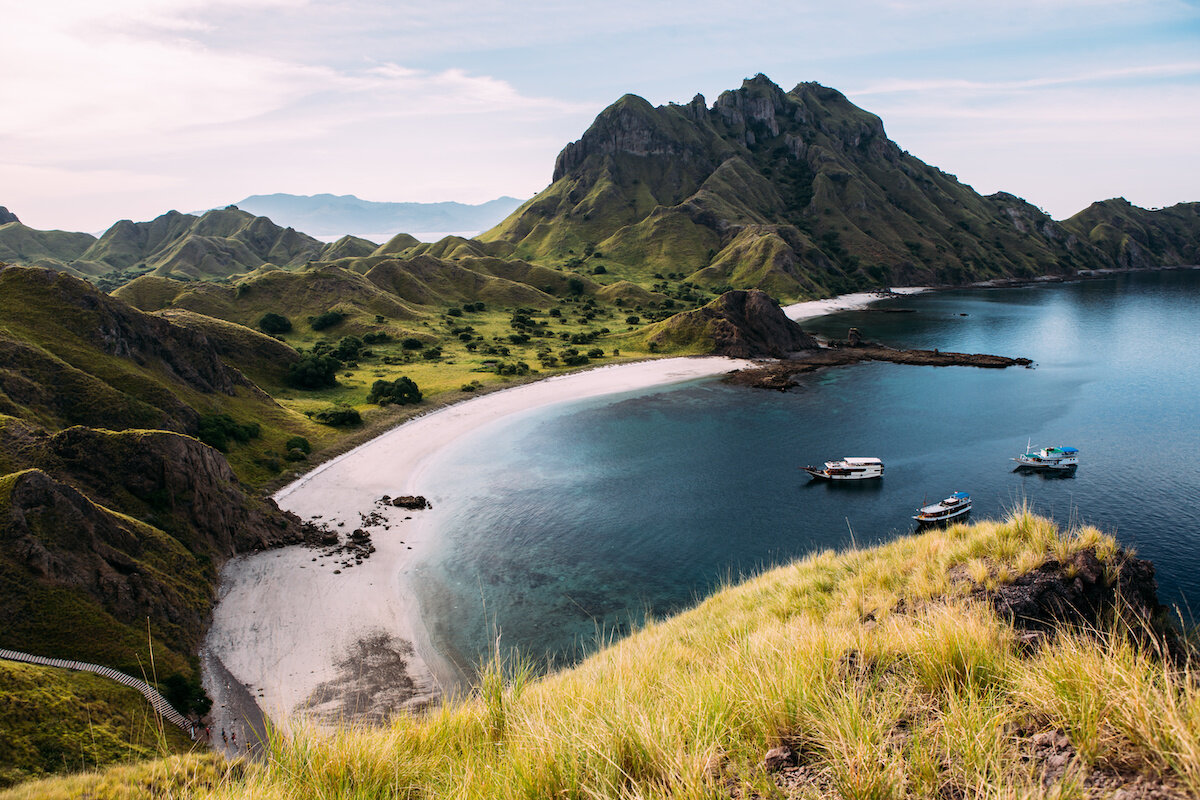Love Coral Reefs? Try These 8 Great Coral Reef Dive Destinations
Coral reefs offer some of the best dive experiences, thanks to their abundant marine life, diverse corals and warm water diving opportunities. Whether the reefs are deep or shallow, there is always something new to find. From tiny technicolour sea slugs to huge ocean giants passing by, coral reefs host it all.
Here, the divers at LiveAboard.com share their 8 of their favourite coral reefs to dive and easy ways you can help protect coral reefs around the world from harm.
1. Komodo, Indonesia
Komodo is one of the most marine species-rich destinations in the world, offering exceptional Indonesia scuba diving and the chance to see Komodo dragons.
Being listed as a UNESCO World Heritage site, it is no surprise the Komodo National Park has something special to offer divers, including over 1,000 fish species, manta rays, dolphins, eagle rays and abundant reef life.
Go diving there and you can immerse in a world of huge underwater pinnacles busy with schools of fish. There are reliable manta ray cleaning stations, vibrant soft corals and plenty of reef sharks to find.
When you’ve had enough diving, you can visit one of the only pink sand beaches in the world or go walking with Komodo dragons.
You can find Green Fins members in Labuan Bajo Komodo here.
2. Wakatobi, Indonesia
A UNESCO Biosphere Reserve, the Wakatobi National Park is a renowned example of successful marine conservation, with thriving reefs photography fans return to time and again.
The islands of Wakatobi, scattered across bright turquoise waters, are perfect for both divers and snorkellers thanks to the abundance of life in the shallows and at depth.
Hawksbill and green sea turtles can be seen at Wakatobi, grazing on shallow seagrass beds and munching on huge reef sponges respectively. Meanwhile, the reefs are busy with swirling schools of pelagic fish and the tiniest critters you can imagine.
This is one of the best destinations in the world for finding pygmy seahorses. You’ll need to look closely though – they’re smaller than your little fingernail!
3. Kimbe Bay, Papua New Guinea
Ranked as one of the world’s best coral reefs by National Geographic, Kimbe Bay is a great dive destination far off the tourist trail.
There are over 200 dive sites and flourishing coral reefs untouched by humans. Being sheltered from the open ocean, the corals of Kimbe Bay have reached enormous proportions. Coral bridges covered in sea fans and staghorn corals provide a dramatic backdrop against big schools of barracuda and passing dolphins. You can also dive a well-preserved WWII Mitsubishi Zero fighter plane there.
4. Florida Islands, Solomon Islands
The Florida Islands were at the centre of the WWII Guadalcanal campaign, resulting in the seabed being littered with around 1,000 wrecks, including over 600 aircraft. If you can take your eyes off the historical wrecks, there are healthy reefs to explore and unique lava tubes.
The Twin Tunnels dive site has a seamount with two large lava tubes. You can descend into either tube, then exit in a cave on a deep reef wall.
Schools of fish circle this special seamount and the reef on top is healthy; with sea fans, pygmy seahorses and brightly-coloured squat lobsters hiding in barrel sponges.
5. Tubbataha National Park, Philippines
With over 10,000 hectares of pristine reefs, you’ll be spoilt for choice if you go diving at Tubbataha Reefs Natural Park.
This UNESCO World Heritage site is also a New Seven Wonder of the World, bursting at the seams with marine life. As well as hundreds of coral and fish species, Tubbataha hosts around 13 different whale species, plus mantas and eagle rays.
Only open to divers from March to June each year, it is one to add to your wish list. Don’t miss it.
6. Southern Atolls, Maldives
The Maldives is best-known for luxurious liveaboards and endless sunshine, perfect for finding numerous whale sharks and mantas rays among picture-perfect atolls.
For healthy coral reefs and few dive crowds as well, visit the Maldives Southern Atolls. These quiet atolls offer exploratory diving with numerous undiscovered diving gems.
Laamu Atoll has plenty of mantas and grey reef sharks, plus huge schools of fish in the deep channels. You can find colourful coral reefs there at Maamandhoo Giri.
Meemu Atoll is a perfect choice for soft coral fans, offering vivid reefs swathed in soft corals.
If you visit Nilandhe Atoll you’ll also have the chance to see mobula rays, mantas, reef sharks and large schools of tuna in the blue.









